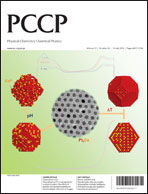Polyoxometalates (POMs) are emerging as useful materials for a variety of applications. Many show potential for use in the biological and medical fields. Those incorporating lanthanides, with their narrow emission bands, large Stokes' shift and tuneable emission are of particular interest for the labelling and imaging of biological molecules. Their longer emission timescale (µs to ms) also allows autofluorescence from the biological samples to be removed by time gating the emission decay. This means that the characterisation of their photophysical properties is required to enable their application. In this work we present a time-resolved emission study of two types of POM structure, a simple europium containing decatungstate and a more complex high nuclear polyoxotungstate, containing either europium or terbium. A concentration study, made monitoring the lanthanide emission helped elucidate POM–POM interactions. The use of global analysis hints at the presence of defined POM aggregates. Interaction with serum albumin was ascertained, both by monitoring the lanthanide emission of the POM and the tryptophan emission from the serum albumin. This showed that the more complex structure had a significantly higher affinity for the protein than the simple structure.

You have access to this article
 Please wait while we load your content...
Something went wrong. Try again?
Please wait while we load your content...
Something went wrong. Try again?


 Please wait while we load your content...
Please wait while we load your content...